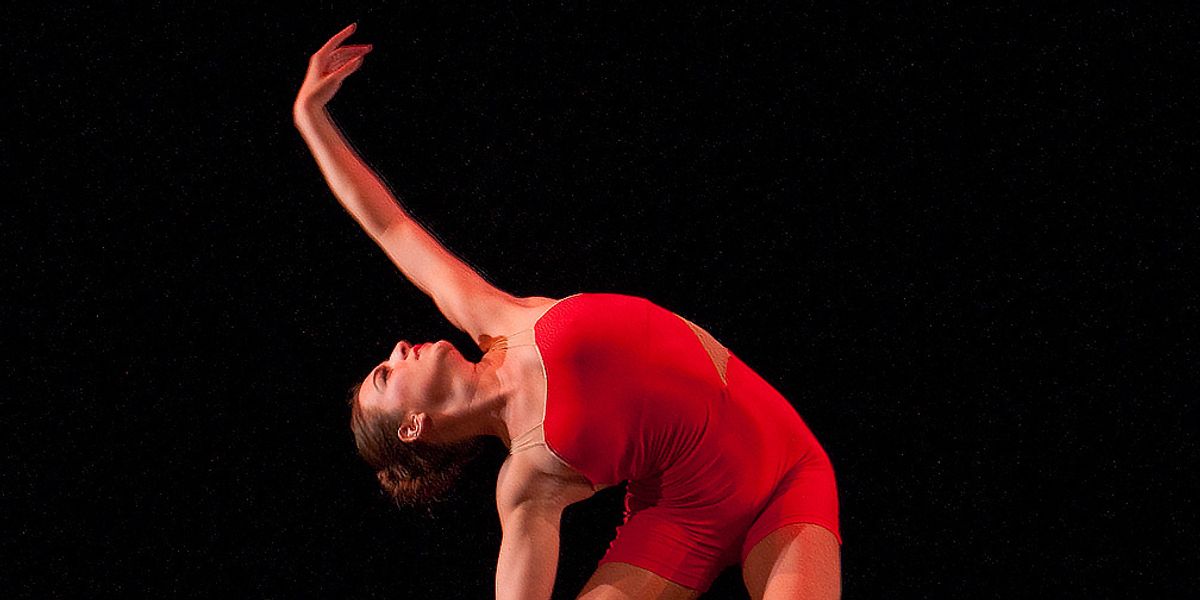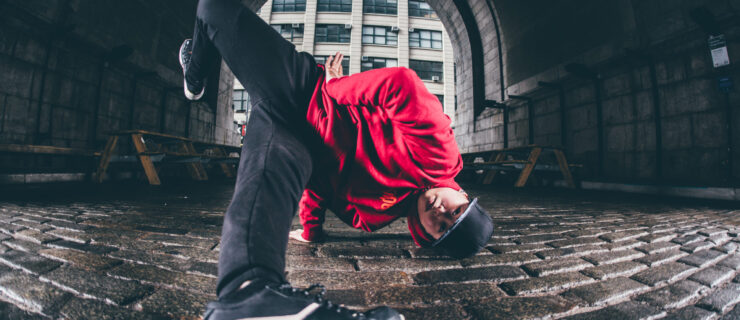Chest Confessions: Real Talk About Dancing with a Large Bust
When Latrice Gregory was hired to dance in a music video for the TV show “Crazy Ex-Girlfriend,” she found herself in a surprisingly unfamiliar situation. The video was for show creator Rachel Bloom’s song “Heavy Boobs,” and “of all the dancers, I had the smallest breasts!” Gregory laughs. “I’m used to being the largest in a group. I actually felt a little inadequate!”
Dancing backup in a comedic ode to being well-endowed may have been a niche job, but Gregory has had no trouble finding mainstream work. A former Knicks City Dancer, Gregory has also worked with Beyoncé, Jennifer Hudson, and Cardi B, as well as on the shows “Fresh Off the Boat” and “Jane the Virgin.” Her resumé is proof that, despite the dance world’s traditional straight-and-slim aesthetic, there’s room for other body types to shine.
That doesn’t mean it’s always easy for large-busted dancers, who might find themselves dealing with closed-minded directors and choreographers, ill-fitting costumes, and/or chronic back pain. But there’s no need to struggle in silence. Here’s advice from dance experts who know what you (and your boobs) are going through.
Technique Talk
In terms of technique, having large breasts doesn’t make you any less capable than your flat-chested peers. That said, there are a few bad habits and alignment issues that can go along with having a bigger bust.
“What I sometimes see, and what I felt in my own body, is a tendency to sit in the lower back,” says Kylie Morton Berry, a teacher at Van Metre School of Dance in Maryville, TN, as well as principal dancer and ballet mistress for the school’s affiliated Appalachian Ballet Company. “When your breasts pull you forward,” she explains, “you may stick your rear end back to counterbalance.” That swaybacked posture isn’t just bad technique—it can also lead to lower back pain.
Alexandra Cook, a teacher and the community programs director for Mark Morris Dance Group in Brooklyn, NY, points out another possible overcompensation: “As a student, I would often be told not to pop my rib cage. After a while, I developed a habit of tucking my rib cage instead.” What went wrong? “I’d never really been popping my rib cage,” Cook explains. “I just had a bigger bustline. My teachers were misreading what they saw.” If you feel like a correction you’re being given isn’t sitting right in your body, Cook recommends talking to your teacher after class, one on one.
“Each of us is faced with different challenges, regardless of body type,” points out Jessi Patz, a professional dancer and physical therapist for the Broadway community. Instead of only worrying about how your breasts may be affecting your dancing, she recommends a more holistic view: “Focus on alignment, strength, flexibility, imbalances, and efficiency.”

Wes Klain, courtesy Gregory
Costume Conundrums
When contemporary ballet dancer Laura Morton (Berry’s sister) was an apprentice with Atlanta Ballet, she was cast to understudy the doll in The Nutcracker. “I went to try on the costume, and it fit me in the waist and the ribs, but the top two hooks wouldn’t hook because of my boobs,” she recalls. “They couldn’t make alterations, so I was told I could no longer understudy the part.”
Already self-conscious about her breasts, Morton admits the situation made her worry that people were more concerned with her body type than her talent. The next time a costume wasn’t working, she felt nervous about asking for alterations. But then she had a heart-to-heart with that ballet’s choreographer, Gemma Bond. “Gemma told me, ‘I cast you for a reason. I want to see you up there—and you happen to have breasts,'” Morton says. “That was a huge shift for me.” Now 22, Morton dances with Atlanta-based troupes Terminus Modern Ballet Theatre and Staibdance, and she’s much more confident about her shape.
Proper fit is about more than hooks hooking and zippers zipping. It’s also vital to feel supported and covered onstage. “I’ve definitely had times where I’ve had to say, ‘I don’t feel comfortable performing in this,’ ” Gregory says. “It shouldn’t be a source of embarrassment; it’s just what I need to do my job well.” One way you can help costumers is to bring in support garments that make you feel secure. (For some ideas, see “Support Systems“.) Costumers can use them for reference, or even work them into the finished look. Gregory once wore her own bra for a Grammy performance with Cardi B. “Wardrobe had zero problems with that,” she says.

Laura Morton as the Sugar Plum Fairy in the Appalachian Ballet Company’s “The Nutcracker” (Calmes, courtesy Morton)
The Intangible Issues
If you’re focusing on proper alignment in the studio and are ready to advocate for yourself on the costume front, is there anything holding you back? Unfortunately, you may still have to contend with other people’s ideas of what a dancing body “should” look like. For classical ballet in particular, the aesthetic remains fairly rigid—and bad experiences can stick with you. Morton still feels apprehensive in certain costumes. “If I’m bouncing, even a little,” she says, “part of me worries, Is the audience going to pay more attention to that than to what I’m giving as an artist?”
There are also negative stereotypes related to having curves. Early in Gregory’s career, she would often get called in for “stripper” roles. “I know that’s because of my body type,” she says. She cautions that if you’re curvy, you have to be extra aware of how you’re presenting yourself, both in person and in photos. “A pose that on someone else would be seen as innocent or artistic can look scandalous on me, simply because I’m more voluptuous,” she explains.
In the dance world, there’s so much that’s out of your control, and how people react to your natural physique falls under that umbrella. But you can control how you respond to feedback and setbacks. For instance, Morton says to remind yourself that, “Women have breasts, and that can be a beautiful thing to see onstage.”
Cook recommends seeking out opportunities where you’re valued for exactly what you bring to the table. “If someone is concerned about your bust rather than your performance quality or your technical ability, pick someone else to perform with,” she says. “The dance world is big and wide and varied, and there’s a place for you in it.”




